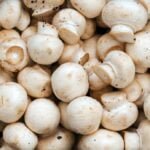How does the yield differ between using rice husk and soy hull in mushroom substrate?
Title: Comparing the Yield Difference of Rice Husk and Soy Hull in Mushroom Substrate
Introduction:
When it involves mushroom cultivation, the selection of substrate performs an important position in figuring out the yield and high quality of the harvest. While rice husk and soy hull are two generally used substances in mushroom substrate, it may be difficult to discover a direct comparability of their yield distinction. In this blog publish, we are going to discover the traits of rice husk and soy hull as substrates and talk about their potential influence on mushroom cultivation. Although there is no such thing as a particular information evaluating their yields, understanding their properties will assist inform your resolution when deciding on a substrate.
1. Understanding Rice Husk as a Mushroom Substrate
– Rice husk, the outer layer of rice grains, is a well-liked selection for mushroom cultivation as a consequence of its availability and affordability.
– It is wealthy in silica, which helps to take care of moisture ranges and supplies structural assist to the substrate.
– The excessive lignin content material in rice husk can promote helpful microbial exercise, aiding in the decomposition of natural matter and nutrient launch.
– Rice husk requires correct remedy, akin to boiling or soaking, to take away residual tannins and make it extra appropriate for mushroom cultivation.
2. Exploring Soy Hull as a Mushroom Substrate
– Soy hull, the outer layer of soybeans, is another substrate generally used in mushroom cultivation.
– It has a better nitrogen content material in comparison with rice husk, which may contribute to elevated substrate vitamin for mushroom development.
– Soy hull accommodates much less lignin and extra cellulose, which suggests it breaks down sooner and may be colonized by mushroom mycelium extra readily.
– Similar to rice husk, soy hull requires correct preparation to take away anti-nutritional components and improve its suitability as a substrate.
3. Factors Influencing Yield Difference:
While the direct yield distinction between rice husk and soy hull in mushroom cultivation might not have been extensively studied, a number of components can contribute to variation in yield:
a) Mushroom species: Different mushroom species have particular substrate preferences. Some mushrooms might thrive higher on rice husk, whereas others might favor soy hull.
b) Nutrient content material: The various nutrient profiles of rice husk and soy hull can influence mushroom development and yield. Understanding the nutrient necessities of your chosen mushroom species is important in deciding on the applicable substrate.
c) Growing situations: Factors akin to humidity, temperature, lighting, and air circulation play very important roles in mushroom cultivation. These situations can have an effect on the development efficiency and yield no matter the substrate used.
Conclusion:
While a direct yield comparability between rice husk and soy hull in mushroom substrate might not be available, understanding the properties and traits of every substrate might help inform your resolution. Ultimately, the selection of substrate ought to be decided by the particular mushroom species you’re cultivating, their vitamin necessities, and the availability of the substrate. By optimizing rising situations and being attentive to correct substrate preparation, you may maximize the yield potential and general success of your mushroom cultivation enterprise.
Remember, all the time conduct your analysis and experiments to seek out the finest substrate match in your explicit mushroom cultivation objectives.




